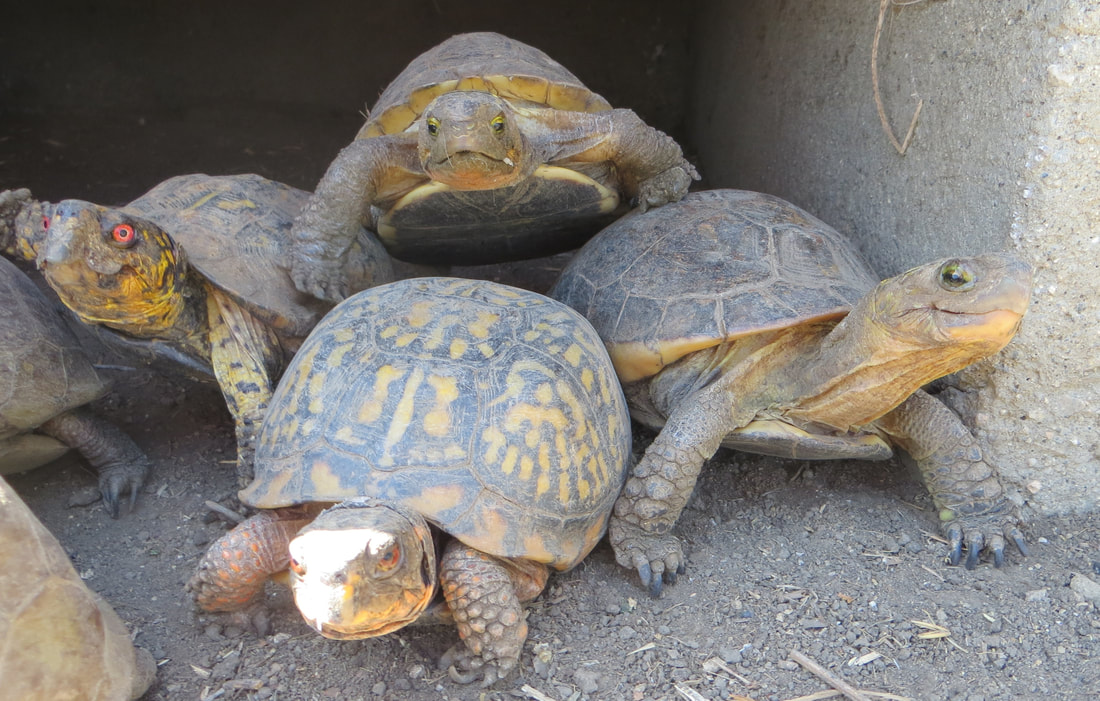|
1. Box turtles are wild animals that live outside. Do not keep yours in a tank. It is a sad existence for an animal that is used to living in a quiet, wild habitat where he can hide among the leaves and bury himself in the dirt. Make sure that your box turtle has a safe place to live in your yard. It should have a high fence to make it predator proof, plenty of places to hide, no pesticides or Snarol and shallow pot saucers of water to soak in. 2. Box turtles should feel heavy when you pick them up. They are carnivores. They eat worms, snails, slugs and other small insects as well as some green vegetation. So if your garden does not have enough for your box turtle to eat, buy some super worms at the local pet store and let him eat as many as he wants every day. 3. Box turtles hibernate. They will stop eating about early September or later if you live in a warm climate. If they are indigenous to your area, or you live in a temperate climate, or if they have lived outside all along, they can hibernate in the leaves and dirt. They need moisture so do not hibernate them in a box in your house. If you must hibernate them in the house, put them in a Rubbermaid box in fertilizer free potting soil in a cool area with a small container of water for moisture. Check them once a month. 4. Box turtles should have bright clear eyes and no runny noses. They normally close up their hinge when disturbed. If you can pull open the bottom shell easily with your finger, and the turtle is acting sluggish, has nasal or eye discharge, has swollen eyes or has stopped eating, you need to see a vet. This is not normal. Make sure that you see a reptile "exotic" vet who knows all about turtles. 5. If your turtle is planning to lay eggs, it will often stop eating. This is normal. It might start and stop digging for several days before it finds the spot it likes. Normally this happens at dusk. They will become mesmerized and dig with their back feet until the eggs are ready to be laid. If you want to hatch them yourself, carefully dig them up, keeping them in the direction that they were laid. Put them in vermiculite with a baby food size jar of water buried next to them. Cover with plastic, put on top of the frig or other warm place and wait three months. If you leave them in the ground (my preference), they usually take longer to hatch. It's possible ants or groundhogs will eat them, however. For more information, follow us on Facebook at American Tortoise Rescue. 6/23/2020 05:00:56 pm
I've been wanting to purchase turtles for my nephews because it has always been a dream of theirs to have this type of pet. I'm glad you shared here that box turtles prey on worms, snails, and slugs; at least I'd have an idea what to prepare for it. I'd also keep in mind to hibernate them inside the house. 7/12/2023 02:28:54 am
Good post. Thanks for sharing with us. I just loved your way of presentation. I enjoyed reading this .Thanks for sharing and keep writing. 7/27/2023 08:14:40 pm
Wow. This is definitely a life-hack! Thank you so much! 8/28/2023 09:30:59 am
We own some turtles and can confirm these tips are accurate! Comments are closed.
|
Please post an email with your comment or email [email protected] if you want a personal answer for a blog question! Archives
November 2023
Categories
All
|


 RSS Feed
RSS Feed